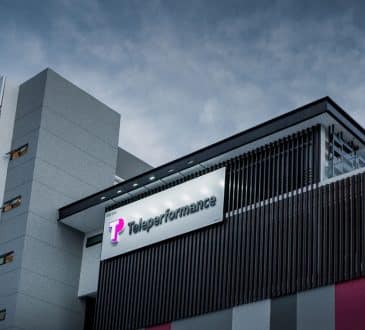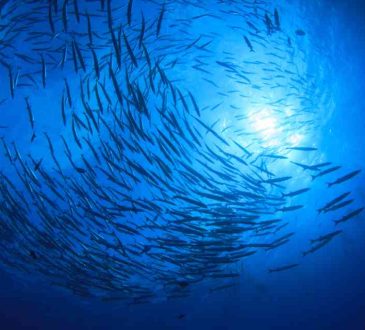World Bank Warns Indonesia of Challenges in Achieving High-Income Status by 2045

The World Bank has cast doubt on Indonesia’s ambition to become a high-income economy by 2045, outlining significant challenges that middle-income nations typically face in making such a leap. To achieve this target, which coincides with the country’s centenary of independence, Indonesia would need to sustain annual GDP growth of 6% to 7% over the next two decades, according to government planning.
Speaking at a seminar hosted at the Finance Ministry in Jakarta, Indermit Gill, chief economist for the World Bank Group, suggested that rapid economic advancement for middle-income countries is extremely rare and would take “a miracle” to achieve within decades rather than centuries. While acknowledging Indonesia’s robust economic growth, Gill cautioned that the path forward would be much more difficult for Southeast Asia’s largest economy.
A recently published World Bank report titled Middle Income Trap highlighted that many middle-income countries have struggled to push beyond about 10% of U.S. GDP per capita, roughly equivalent to $8,000 today. Since the 1970s, income growth in these countries has stagnated at this level, trapping them in economic limbo.
Of the few nations that have reached high-income status since 1990, more than a third benefited either from EU integration or newly discovered oil reserves. Currently, 108 middle-income economies, home to 75% of the global population, face serious challenges such as aging populations, rising government debt, environmental crises, and trade fragmentation.
Despite Indonesia’s commitment to strengthening its public sector, Gill pointed out that the country underperforms in regulatory and operational efficiency. He noted that while Indonesia is moving in the right direction, the pace of reform is lagging compared to countries like China and South Korea, which successfully transitioned to high-income status in the past.
Gill emphasized the rapid development of South Korea as a valuable lesson for policymakers, as the country transformed from low- to high-income status in just 25 years. The World Bank recommended that Indonesia adopt the “3i” strategy—investment, technology infusion, and innovation—to overcome the middle-income trap, with South Korea as a model for success.
While Indonesia has made progress in critical areas such as infrastructure, governance, and macroeconomic stability, the World Bank highlighted the need for market efficiency reforms, particularly in finance, labor, trade, competition, and business regulation. Gill identified these areas as key reasons for the country’s slow productivity growth.
Indonesia, classified as an upper-middle-income economy with a per capita GDP of around $5,200, aims to increase this to between $19,000 and $22,000 by 2045 to achieve high-income status. Currently, Indonesia’s middle class comprises about 52 million people or 18.8% of the population, and the government hopes to expand this demographic to 80% by 2045.
Although household spending remains a significant driver of Indonesia’s GDP, accounting for more than half of economic output, Gill stressed the importance of structural reforms and regulatory changes to meet the country’s 2045 goals.
One of the major obstacles identified is the dominant role of state-owned enterprises (SOEs), which Gill argued could crowd out private competition and stifle growth. While SOEs are not inherently negative, their strong presence in Indonesia’s economy creates less room for competitive private sector involvement. According to the World Bank, Indonesia has the highest level of public ownership among large middle-income economies, which is linked to weaker governance frameworks that limit competition.
At the same event, Maria Vagliasindi, the World Bank’s lead economist for infrastructure, emphasized the need for middle-income countries to regulate powerful incumbents, such as SOEs and market leaders, who often use their position to block competitors. She argued that building strong regulatory institutions is essential to limit the influence of these incumbents and open up markets for new players.
Finance Minister Sri Mulyani stressed the importance of avoiding the middle-income trap by managing the state budget wisely, especially in areas like digital infrastructure and human capital development. However, she also warned that excessive regulations often complicate economic activities, hindering growth.
The head of the ministry’s Fiscal Policy Agency, Febrio Kacaribu, highlighted industrialization as key to Indonesia’s future growth, with a focus on revitalizing the manufacturing sector and boosting services in high-value industries such as electronics, data centers, and semiconductors. He pointed out that the manufacturing sector holds significant potential for value-added growth but requires substantial transformation.
Meanwhile, Indonesia’s manufacturing sector continued to face challenges, with the purchasing managers’ index (PMI) dropping to 48.9 in August, down from 49.3 in July, signaling a downturn, according to an S&P Global report.
Deputy Finance Minister Thomas Djiwandono added that the incoming administration under president-elect Prabowo Subianto, who is set to take office in October, will prioritize education, health, food, and energy security as part of the country’s transition to a high-income economy. Djiwandono emphasized that achieving the ambitious 8% growth rate is not just an aspiration, but a necessity for Indonesia’s future prosperity.
| GDP (nominal) | Capital | Head of State | Head of Government | GDP (nominal) per capita | GDP (PPP) | GDP (PPP) | GDP (PPP) per capita |
|---|---|---|---|---|---|---|---|
| Indonesia | Jakarta | Joko Widodo | Joko Widodo | 1.417.387 | 5.109 | 4.720.000 | 15.834 |
Have you read?
Countries Most in Debt to the International Monetary Fund (IMF).
Most Successful Unicorn Startups.
$100 Billion Club: Richest People With The 12-Figure Fortunes.
Largest electricity consumers in the world, by country (in terawatt-hours).
Countries that Export the Most Goods and Services.
Bring the best of the CEOWORLD magazine's global journalism to audiences in the United States and around the world. - Add CEOWORLD magazine to your Google News feed.
Follow CEOWORLD magazine headlines on: Google News, LinkedIn, Twitter, and Facebook.
Copyright 2025 The CEOWORLD magazine. All rights reserved. This material (and any extract from it) must not be copied, redistributed or placed on any website, without CEOWORLD magazine' prior written consent. For media queries, please contact: info@ceoworld.biz











